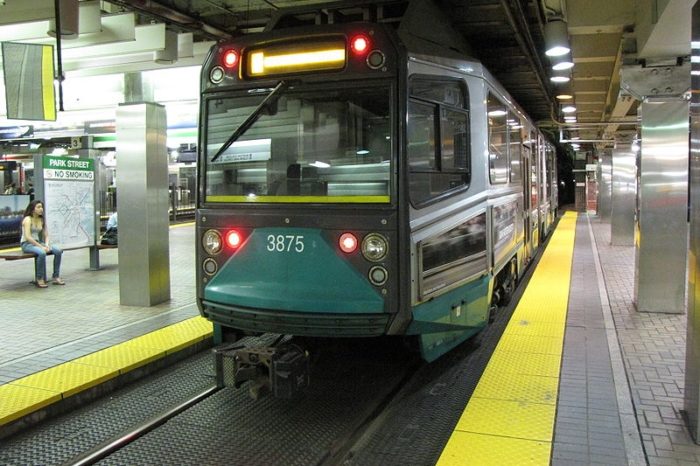Working from facts on the crisis at the MBTA
With all eyes on the MBTA, it is probably to be expected that dueling visions would emerge on a Thursday afternoon, just after the noon hour, as to what ails the T and how to fix the Authority. That came in the form of a Public Statement from Pioneer and a report from the group Transportation for Massachusetts (MASSPIRG, Conservation Law Foundation).
I had a chance to speak with Kirstie Pecci of MASSPIRG on WGBH’s Greater Boston about the challenges faced by the T. Good conversation, but a few clarifications would be helpful.
The T is important to the Greater Boston area, but really services as an essential cog in the role of the Hub across Massachusetts and the region. When it doesn’t work at acceptable levels, we lose days of work – hundreds of millions of dollars in economic activity potentially, as well as lots of state and local tax dollars. It affects livelihoods at all social strata. So this is a debate to have based on nothing but the facts.
In that spirit, let me offer two reactions to representations made by Kirstie. First and foremost, the MBTA’s debt is in no way related to the construction of Big Dig tunnels, ramps, bridges and roadways meant for motor vehicle use. The T owes over $5 billion in principal on its debt ($9 billion if you count interest), and a third of the $5 billion debt figure is the result of the rail projects associated with Big Dig mitigation. As Steve Poftak wrote in Boston Magazine in 2012:
The MBTA’s debt comes from three sources — $1.85 billion from spending since the 2000 start of forward funding, $1.65 billion that was transferred to the MBTA under forward funding and was related to previous transit projects, and $1.7 billion in funding for projects mandated under a Big Dig-related agreement. (N.B. All above figures are from the MBTA Advisory Board’s Budget and Fiscal Analyst Brian Kane’s invaluable Born Broke report. Kane, of course, shouldn’t be held responsible for the opinions in this blog.)
The so-called “Big Dig Mitigation” rail projects were 14 court-ordered transit-related construction projects, which advocates argued would provide environmental mitigation for the impact associated with the Big Dig’s new car load capacity. As Poftak notes, “The projects were agreed to in 1990 by the Sec’y of Transportation and the Conservation Law Foundation (see Exhibit A here) and have ‘evolved’ over time.” (Note again that CLF is a member of the Transportation for Massachusetts group.) And while the shorthand for these projects has become the “Big Dig Mitigation” projects, Poftak makes the point:
It’s also important to define what that $1.7 billion was spent on. The key point is that despite the moniker “Big Dig Debt,” all of these projects directly relate to transit expansion or improvements like extending the commuter rail on the South Shore and to Worcester, adding parking spaces, building out the Fairmount Line — not roadways and, certainly, not the Big Dig. They came about as a result of an agreement that had to be signed in order for the environmental permitting around the Big Dig to take place. Some suggest that another driver behind the signing (http://www.commonwealthmagazine.org/Voices/Considered-Opinion/2005/Spring/Dug-In.aspx) was to lock in a commitment to transit expansion and that the air quality justification for the agreement was flawed.
Secondly, Kirstie noted that apart from the recent service delays due to severe weather, the T is providing a high-quality service. As is the case with firms located in downtown Boston, most of Pioneer’s staff is dependent on the T. All too often, regardless of the season, they share their frustrations with bus, subway and commuter rail service. I personally think of good performance as:
- a lack of breakdowns (translation: no need to detrain)
- signalization that works predictably (not getting stopped underground for long periods of time)
- on-time arrival (predictability)
- communication on train status (in case you need to move an appointment back a bit)
- adequate rider capacity (not having to watch two trains on the Green line pass you before you squeeze into THE third; when you’ve boarded the train or bus, not being thrust into exercises of forced public intimacy; goal line: some limited ability to read)
- consistent access to WiFi (some limited ability to read, part 2)
- climate control in the cars (to put in sophisticated language, less of “les odeurs”)
I’ll leave it to commuter and subway riders to tell me if they think the T is performing anywhere close to acceptably on these very basic performance metrics.
Follow me on twitter at @jimstergios, visit Pioneer’s website, or check out our education posts at the Rock The Schoolhouse blog.



